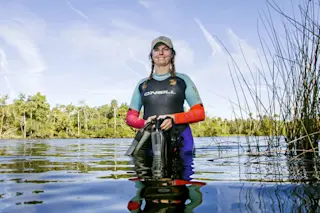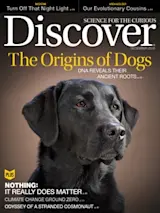As an archaeologist at Florida State University, Jessi Halligan blends her love of teaching with her passion for underwater excavation of cultural artifacts. She got to indulge that passion when she and her team made a discovery, reported this past spring, in the Florida section of the Aucilla River.
Deep in a sinkhole, buried in a pile of sand and mastodon dung, was a small, ancient knife used for hunting and cutting carcass meat from the bone. The dung dates back roughly 14,500 years — some 1,500 years before the Clovis people, who were long thought to have been America’s first human inhabitants. Discover caught up with Halligan to learn more about the find and the murky world of underwater archaeology.
Q: First off, what’s the impact of the Aucilla River knife discovery?
A: A lot of us thought the Americas were populated by folks who came from Siberia across ...















